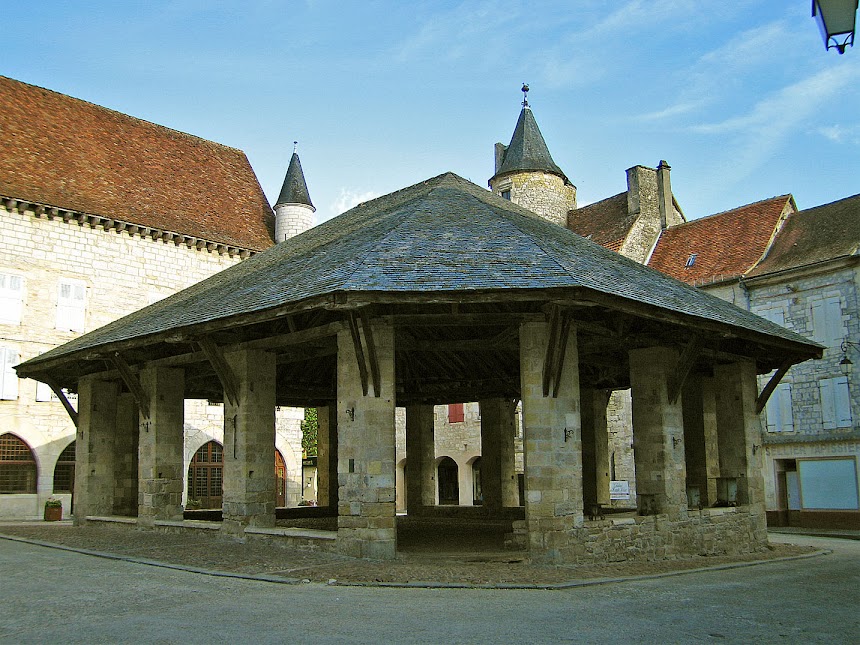I doubt that most people think of cattle country when they think of the Dordogne, which is a French département or county. Castles, yes. Foie gras, yes. Geese and ducks, yes. But beef cattle? The two breeds of beef cattle produced in the Dordogne are la limousine (brown) and la blonde d'Aquitaine (beige or white). La Dordogne accounts for about a third of the beef cattle raised in the Nouvelle-Aquitaine region, which is nearly 10 times larger, and of which the Limousin region is a part. Here's a slideshow featuring some of the bovines I photographed in the Dordogne.
The old name for what is now called La Dordogne was Le Périgord. La Dordogne is part of a big French administrative region called La Nouvelle-Aquitaine that was created about five years ago by combining three previously existing regions: Aquitaine, Poitou-Charentes, and Limousin. La Nouvelle Aquitaine covers about 84,000 km² of territory in southwestern France. That's approximately 32,500 mi², which is about the size of South Carolina, Maine, or Maryland. The area of the Dordogne is just 9,060 km², or about 3,500 mi². That makes it bigger than Delaware but smaller than Connecticut.
By the way, annual consumption per capita of beef in France is about 70 lbs. In the U.S. it's about 80 lbs., as best I can determine. The French eat more and more hamburgers, but I'm sure France can't compare to the U.S. when it comes to 'burgers. In fact, just found a French web site that says the French consume 1.7 billion hamburgers a year, while Americans consume nearly 50 billion! Another site says that Americans consume 2.4 hamburgers per day, but that can't be true. Can it? Some 85% of the restaurants in France now have hamburgers on their menu.












































